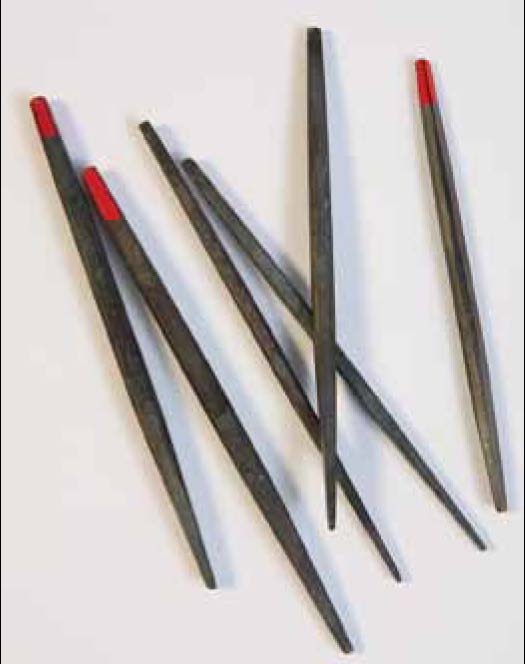Japanese Chasing Tools
Japanese chasing tools are made from steel blanks available in Japan called tagane. Japanese chasing hammers are lightweight with long straight handles and smaller faces than European styles. They balance beautifully in the hand and are effortless to use. The type of Japanese chasing I learned was called uchidashi. Mostly a top-down technique, this style of chasing includes chiseling to remove material, line and dot inlay, and hammer engraving using a chisel. The tools are shaped at the working end to exact specifications including angles and millimeter measurements of the faces for their particular use.
4 Minute Read
Japanese_Chasing_Tools are made from steel blanks available in Japan called tagane. Japanese chasing hammers are lightweight with long straight handles and smaller faces than European styles. They balance beautifully in the hand and are effortless to use.
The type of Japanese chasing I learned was called uchidashi. Mostly a top-down technique, this style of chasing includes chiseling to remove material, line and dot inlay, and hammer engraving using a chisel. The tools are shaped at the working end to exact specifications including angles and millimeter measurements of the faces for their particular use.
I have made the kebori and uchidashi namekuri and use them often in my work. The tools are annealed, hardened and tempered in the same way as Western style tools.
Lucinda Brogden and Candace Beardslee, two of the featured artists, have adapted the Japanese tools to use in their work. Candace orders the stock from Japan. I am not aware of suppliers in this country who offer tagane tool blanks or Japanese chasing hammers and pitch but they are available from the company listed below.
| Japanes tool blanks, called tagane. |
| The top of the tool should be beveled, presenting no corners that will catch and deflect the hammer. |
For Japanese pitch, hammers and chasing tool blanks:
Comokin (or Komokin)
Bell Building 8F, No. 3-18-17, Minami-Aoyama,
Minato-ku, Tokyo 107-0062, Japan
phone: +81-3-3405-6765
fax: +81-3-3405-6744
www.jgma.or.jp (in Japanese)
Purchase your own copy of “Chasing & Repousse Methods Ancient and Modern” today. |
You assume all responsibility and risk for the use of the safety resources available on or through this web page. The International Gem Society LLC does not assume any liability for the materials, information and opinions provided on, or available through, this web page. No advice or information provided by this website shall create any warranty. Reliance on such advice, information or the content of this web page is solely at your own risk, including without limitation any safety guidelines, resources or precautions, or any other information related to safety that may be available on or through this web page. The International Gem Society LLC disclaims any liability for injury, death or damages resulting from the use thereof.
The All-In-One Jewelry Making Solution At Your Fingertips
When you join the Ganoksin community, you get the tools you need to take your work to the next level.
Trusted Jewelry Making Information & Techniques
Sign up to receive the latest articles, techniques, and inspirations with our free newsletter.
